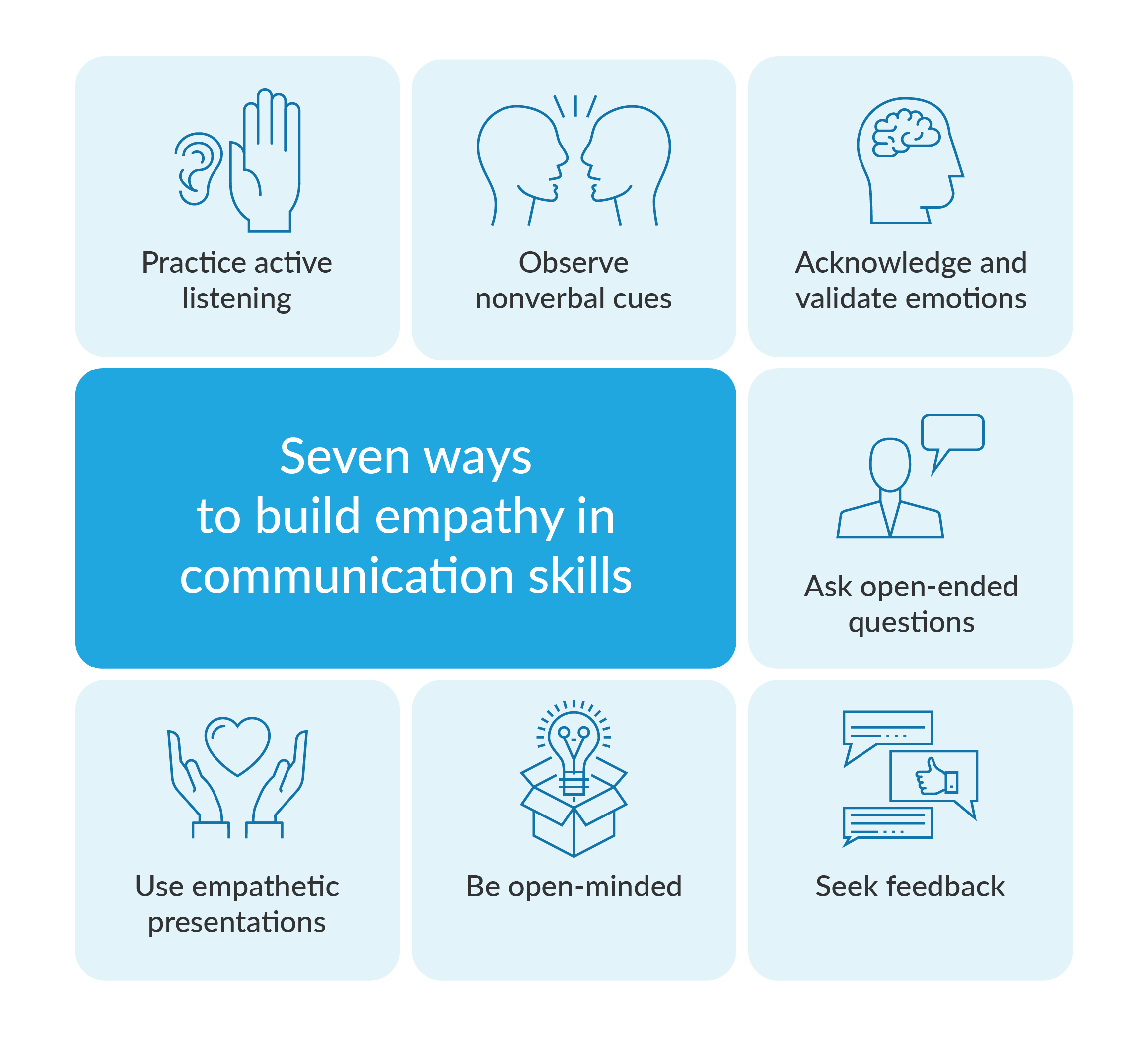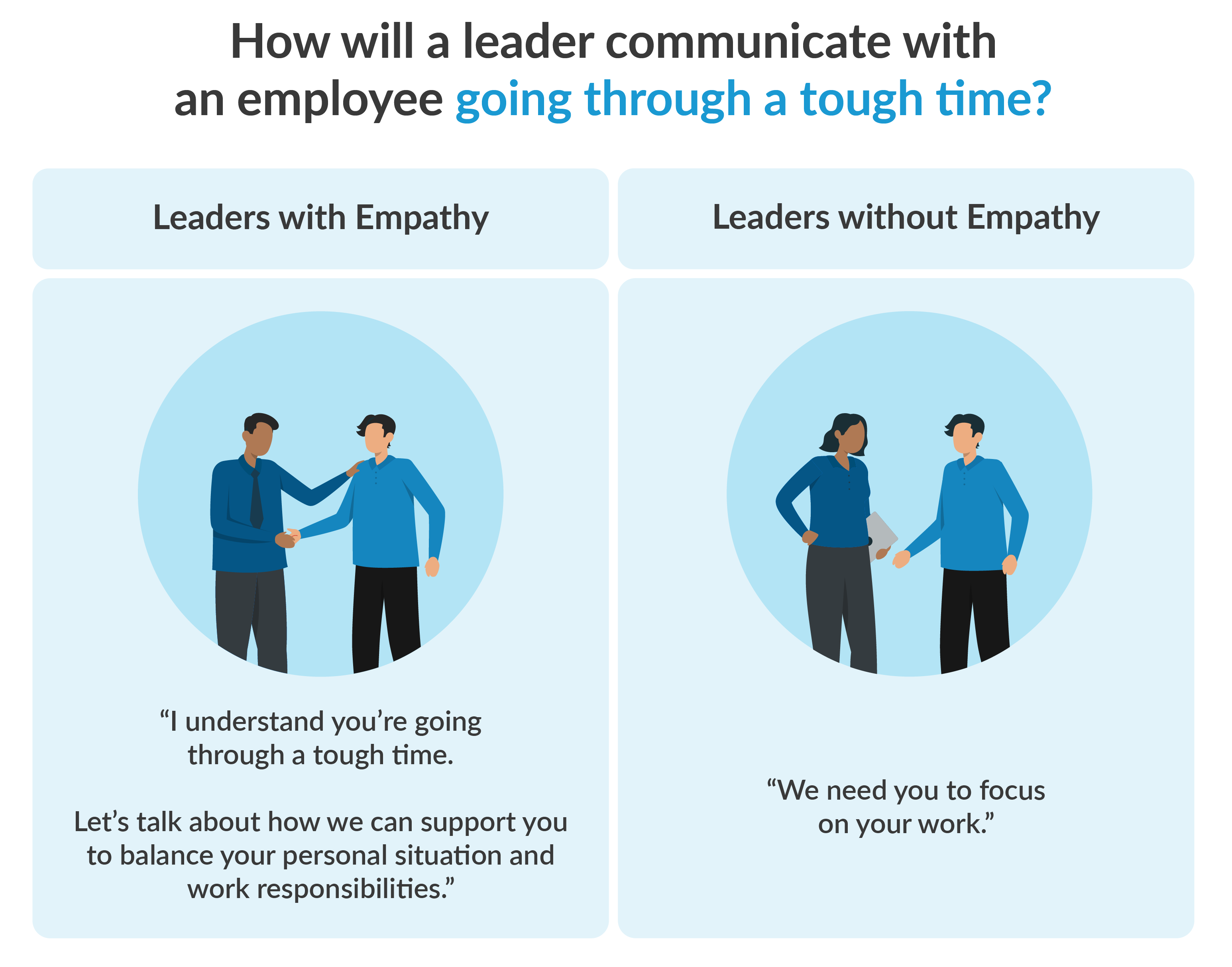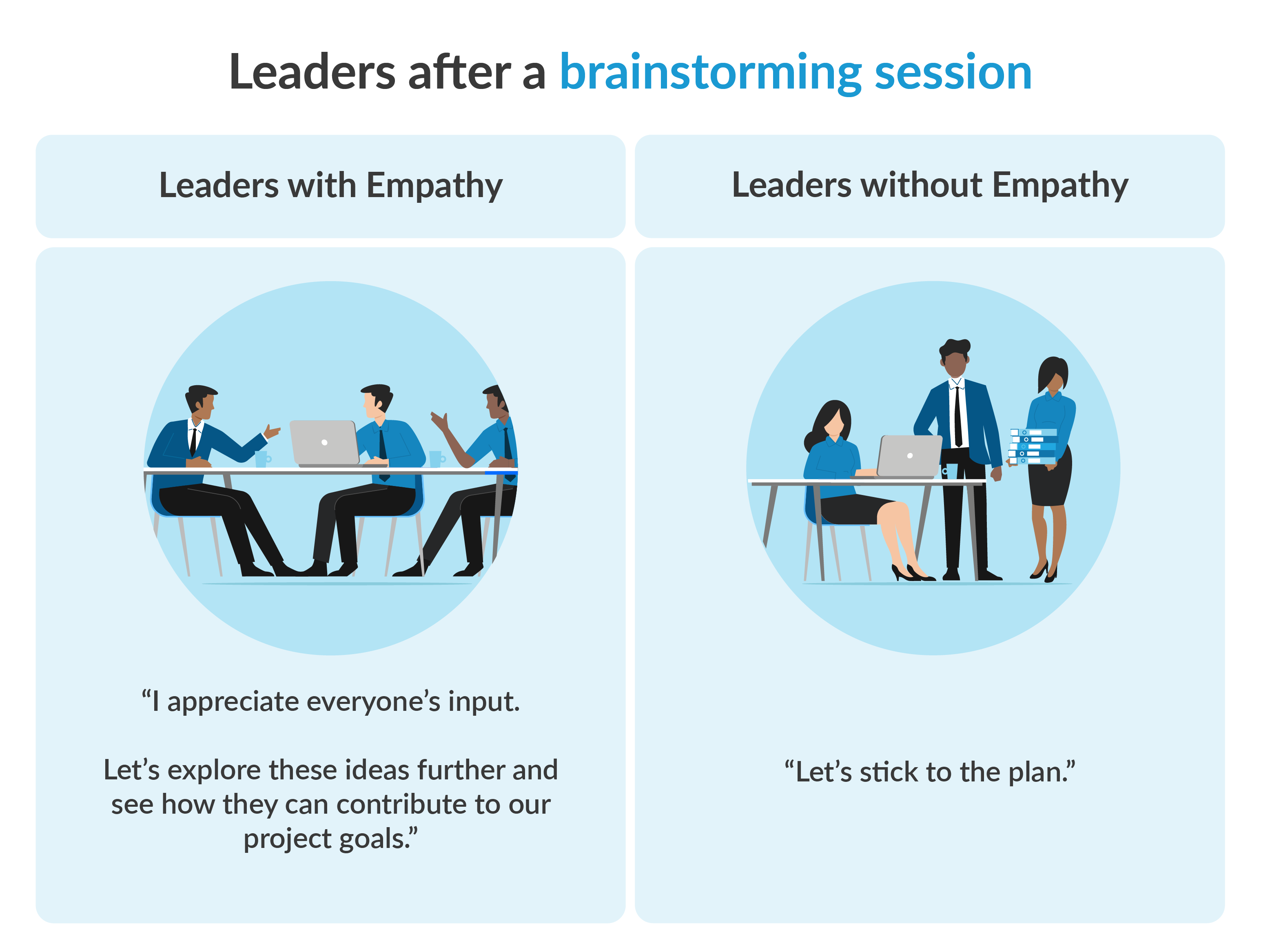Empathy in communication: The role of empathetic communication for successful business

Empathy is a fundamental aspect of human communication, bridging gaps, nurturing relationships, and fostering successful business outcomes. In today's interconnected business world, empathetic communication has emerged as a key differentiator, enabling professionals to engage with clients, colleagues, and stakeholders on a deeper level. Understanding and addressing the emotions of others can significantly influence interactions, transforming them into meaningful exchanges. This article will take you into the intricacies of empathy in business communication and how it plays a pivotal role in achieving business success.
Understanding empathic communication
Empathy is the ability to understand and share the feelings of others. This requires recognizing the emotional undercurrents in conversations and responding in a way that demonstrates understanding and compassion. In a business context, empathic communication goes beyond active listening, including acknowledging emotions, validating concerns, and responding in a manner that makes others feel valued. This can add trust, improve relationships, and lead to positive business outcomes.
Barriers to empathic communication in a business
Despite its benefits, several barriers can impede empathy from improving communication. Recognizing and addressing these barriers is crucial for fostering empathy, meaningful dialogue, and positive business outcomes. By understanding these obstacles, organizations can develop strategies to navigate them effectively, ensuring empathy flourishes.
Time constraints
In fast-paced business environments, individuals might feel pressured to quickly conclude conversations, overlooking empathy in responses. For example, in a corporate meeting with tight schedules, a manager might rush through discussions, leaving little room for empathetic dialogue.
This lack of empathy can lead to misunderstandings or unresolved issues. To address this barrier, companies can incorporate designated time for open dialogue or one-on-one meetings, allowing for empathic conversations and ensuring that concerns are addressed thoroughly.
Cultural differences
Different communication styles and norms can hinder empathy and understanding. Directness might be perceived as rude in some cultures but as clarity in others. For example, imagine an American company collaborating with a Japanese business. The American team’s direct communication style might be seen as too blunt or even disrespectful by their Japanese counterparts, who might prefer a more indirect approach.
This cultural gap can lead to miscommunications and strained relationships. To navigate this barrier, businesses can provide cultural sensitivity training to help employees understand and respect diverse communication styles.
Preconceived notions
Prejudices or assumptions about a person's background or beliefs can obstruct empathy in communication, preventing meaningful dialogue. For instance, a manager who assumes a new hire from a different cultural background may not contribute meaningfully to meetings might inadvertently ignore their input. This preconceived notion can damage morale and stifle collaboration.
To combat this barrier, companies can emphasize inclusivity and diversity, encouraging all voices to be heard and valued, regardless of background. Additionally, team-building activities can help break down these assumptions, to cultivate empathy and open communication.
Why is empathy important for effective communication?

Empathy is crucial for various aspects of business communication. By understanding and addressing others' emotions, businesses can create meaningful relationships, build collaboration, and achieve successful outcomes. Here’s a closer look at how using empathy plays a pivotal role in different aspects of business:
Building trust
Using empathy cultivates trust by acknowledging and addressing concerns. For example, a company responding empathetically to a client's dissatisfaction can turn a potential conflict into an opportunity for resolution and loyalty. This trust can lead to stronger business relationships and improved collaboration.
Enhancing negotiations
Understanding the other party's perspective can lead to mutually beneficial agreements. For instance, a sales negotiation where both sides feel understood and respected is more likely to conclude amicably, paving the way for long-term partnerships. This mutual understanding can lay the groundwork for lasting business relationships.
Improving customer satisfaction
By empathetically addressing customer needs and concerns, businesses can enhance satisfaction. A customer service representative acknowledging and resolving a complaint empathetically can turn a dissatisfied customer into a brand advocate, resulting in repeat business and positive word-of-mouth referrals. Right?
Fostering teamwork
When team members feel understood and supported, they are more likely to work together effectively. This can lead to a more cohesive team, resulting in increased productivity and satisfaction. By acknowledging the challenges and successes of each member, empathy allows and improves team morale, strengthens relationships, helps communicate tough messages easily, and promotes collaboration.
This positive environment also encourages open dialogue, where team members feel comfortable sharing ideas and opinions, leading to more innovative solutions and successful projects.
Tips to build empathetic communication skills

Building empathic communication skills is essential for creating positive relationships, effective collaboration, and successful business outcomes. Here are some key strategies to develop and enhance these skills:
Practice active listening
Active listening involves fully concentrating, understanding, and responding to the speaker. This helps you grasp the speaker's emotions and concerns, allowing for empathetic responses.
- Give your full attention: Avoid distractions like phone notifications or multitasking during conversations. For instance, imagine a colleague approaching you with a concern. By setting aside your tasks, maintaining eye contact, and acknowledging their words, you demonstrate active listening, making them feel valued.
- Paraphrase and clarify: Repeat what the speaker has said in your own words to ensure you understand correctly. For example, in a business meeting, rephrasing a client’s request can confirm comprehension and show empathy, building trust and preventing misunderstandings.
Observe nonverbal cues
Body language, facial expressions, and tone of voice can provide valuable insights into the speaker's emotions.
- Pay attention to body language: Notice if the speaker seems tense, relaxed, or animated. For example, a colleague discussing a challenging project might exhibit crossed arms or a furrowed brow, indicating stress. Acknowledging these nonverbal cues can help you offer supportive and empathetic responses.
- Tone and expressions: Listen for variations in tone and observe facial expressions. A positive tone or smile might indicate agreement, while a hesitant or flat tone could signal discomfort. Recognizing these nuances allows for empathic responses that attract positive interactions.
Acknowledge and validate emotions
Validating the speaker's feelings shows empathy and builds rapport.
- Empathic responses: Phrases like "I understand how you feel" or "That sounds challenging" demonstrate empathy, making the speaker feel heard and understood. For example, acknowledging a team member's frustration over a delayed project can build a supportive environment.
- Show compassion: Offer supportive words or gestures, such as a nod or pat on the shoulder, to convey understanding. In a difficult conversation with a colleague, showing compassion can bridge emotional gaps, facilitating constructive dialogue.
Ask open-ended questions
Encourage dialogue by asking questions that require more than a yes or no answer, allowing for meaningful conversations.
- Encourage depth: Questions like "Can you tell me more?" or "How do you feel about this?" show interest in the speaker's thoughts and emotions. For example, in a sales meeting, asking open-ended questions can help uncover a client's specific needs, allowing for empathetic and tailored responses.
- Encourage exploration: Open-ended questions can encourage the speaker to explore their thoughts and feelings in more detail. For instance, in a performance review, asking an employee about their experiences can lead to a deeper understanding of their challenges and goals, encouraging empathy.
Seek feedback
Request feedback from others to improve your empathic communication skills.
- Constructive criticism: Ask colleagues or peers for feedback on your communication style, and incorporate constructive criticism. For instance, a colleague might suggest being more patient in conversations, prompting you to focus on giving others space to express themselves fully.
- Self-reflection: Reflect on your conversations and identify areas for improvement. Consider how empathetically you responded and how to enhance future interactions. This self-awareness can guide you toward more empathetic communication.
Be open-minded
Approach conversations with an open mind, avoiding preconceived notions or biases.
- Avoid assumptions: Recognize and set aside assumptions about the speaker. For instance, don’t assume a new hire’s limited experience indicates a lack of insight. This open-minded approach allows for meaningful dialogue and empathetic communication.
- Embrace diversity: Appreciate diverse perspectives and backgrounds. In a multicultural workplace, acknowledging and respecting different communication styles can build empathy, leading to more effective interactions and a harmonious work environment.
Create and deliver empathetic presentations
Crafting and delivering empathetic presentations helps build rapport and engage the audience effectively.
- Understand your audience: Tailor the presentation to meet the audience's needs, concerns, and interests. For example, a presentation to potential investors should address their specific interests, such as market potential, risks, and returns, demonstrating an understanding of their perspective.
- Engage emotionally: Use relatable examples and stories to resonate with the audience on an emotional level. This approach helps create an empathetic connection, making the presentation more impactful and memorable.
Empathy in communication and leadership
Empathetic leaders can inspire and motivate their teams more effectively. They recognize and address the emotional dynamics within their teams, adding trust, collaboration, and engagement. Empathy and understanding in the workplace approach not only nurture individual well-being but also contribute to a positive organizational culture, leading to stronger business outcomes. Here's how empathetic leadership can transform team dynamics:
Boosting morale
When leaders communicate with empathy with their team's challenges and successes, it encourages a positive work environment, improving morale and engagement. For instance, a leader who acknowledges an employee's hard work and offers praise demonstrates empathy, boosting team spirit.
As Richard Branson once said,
Clients do not come first. Employees come first. If you take care of your employees, they will take care of the clients.
This quote emphasizes how empathetic leadership can create a positive cycle, where a motivated and supported team provides better service, ultimately benefiting the business.

Driving innovation
Leaders with empathy can better understand their team's perspectives, encouraging open dialogue and creative problem-solving. For example, a leader who listens to diverse ideas and incorporates feedback can drive innovation, leading to business growth.
Google implemented the "20% Time" policy, allowing employees to spend 20% of their time on projects they were passionate about. This empathetic approach acknowledged their interests, leading to innovations like Gmail and AdSense, which have significantly contributed to the company's success.

Handling conflict
Empathy helps leaders manage conflicts by understanding different viewpoints and finding solutions that address everyone's concerns. For instance, a leader who mediates a disagreement between team members by acknowledging both sides can diffuse tension and find a compromise.
In a business context, a leader who empathizes with each team member's perspective can guide them toward resolution, preventing ongoing tension and stimulating a more harmonious work environment.
Empathy in communication with your prospects
Empathy plays a crucial role in business communication with prospects, particularly in establishing rapport and trust. Understanding their needs and building long-term relationships can lead to successful conversions and lasting partnerships.
Understanding their needs
To establish rapport with prospects, it's essential to understand their unique needs and concerns. Tailoring communication to address these needs shows cognitive empathy, increasing the likelihood of conversion. For example, a sales representative who actively listens to a prospect's goals and challenges can offer solutions that align with their needs. This empathetic approach can lead to a successful sale and a satisfied customer.
As Dale Carnegie once said,
To be interesting, be interested.
This quote underscores the importance of genuinely engaging with prospects, showing that their needs are understood and valued.
Building long-term relationships
Empathetic communication helps lay the groundwork for long-term relationships by creating a positive initial impression and promoting ongoing engagement. This can transform prospects into loyal clients.
For instance, a consulting firm that maintains an empathic relationship with a new client, addressing their concerns and providing tailored advice, can nurture a lasting partnership. By consistently showing empathy, the firm can develop a strong relationship, leading to repeat business and potential referrals. This approach not only benefits the immediate relationship but also contributes to the firm's long-term success.
Empathy in communication for customer relations
Communication and empathy are particularly vital in customer relations, where understanding and addressing customers' concerns can significantly impact business success. Here's how empathy allows us to transform customer relations:
Handling complaints
Empathy can help diffuse tense situations by showing customers their concerns are heard. This approach can turn dissatisfaction into loyalty.
For instance, consider a situation where an airline passenger's flight is delayed, leading to frustration. An empathetic response from customer service, such as acknowledging the inconvenience and offering solutions like rebooking or compensation, can transform the experience. This response not only resolves the immediate issue but also rebuilds trust, fostering a positive relationship.
Customer feedback
By empathetically responding to feedback, businesses can make informed improvements, aligning their services more closely with customer needs.
The most appreciated example involves Apple, which regularly seeks user feedback and incorporates it into product updates. This empathetic approach has led to features like Dark Mode and enhanced privacy settings, addressing customer concerns and improving satisfaction. This alignment with customer needs can strengthen relationships and foster brand loyalty.
Brand loyalty
When customers feel valued, they are more likely to remain loyal to a brand. This loyalty can lead to repeat business and positive word-of-mouth marketing.
A notable example is the skincare brand Glossier, which engages empathetically with its customers, particularly on social media. By actively responding to comments, sharing user-generated content, and incorporating feedback into new products, Glossier has built a loyal community. This community has been instrumental in the brand's growth, demonstrating the power of emotional empathy in nurturing loyalty.

Bring empathy to your business communication seamlessly with Prezent
It's not just talking at your audience — it’s about matching their wavelength.
Prezent understands that and offers tailored solutions to elevate your business communication in a world where understanding and connection are paramount. Recognizing that effective communication transcends mere dialogue, Audience Empathy is integrated into its ASTRID framework, ensuring seamless resonance with audiences.
Prezent's Communication Fingerprint is an innovative tool designed to refine and amplify communication efforts. Here's how it enriches each facet of message delivery:
- Visual harmony: Communication Fingerprint delves deep into the visual preferences of audiences. Whether they lean towards a sleek corporate aesthetic or vibrant, imaginative designs, this tool ensures visuals strike the perfect chord.
- Mastery of storytelling: Prezent understands the power of storytelling in captivating an audience. With Communication Fingerprint, narratives are crafted to evoke emotion and leave a lasting impression, guiding audiences through captivating journeys of discovery.
- Data transformed: Numbers become narratives with Communication Fingerprint. Transforming raw data into visually compelling representations ensures that complex information is not only understood but embraced, building deeper engagement with audiences.
- Tailored communication: One size does not fit all in communication. Communication Fingerprint ensures messages are tailored to the unique preferences of audiences. Whether they crave simplicity or demand detail, this tool ensures presentations speak their language, creating a genuine connection and understanding.
Create your Fingerprint, know your communication style, and create presentations that appeal to your target audience. Discover more about Prezent and how it can help you connect with your audience more deeply by scheduling a demo today. If you prefer hands-on exploration, feel free to explore the features with our 14-day free trial.


.avif)









